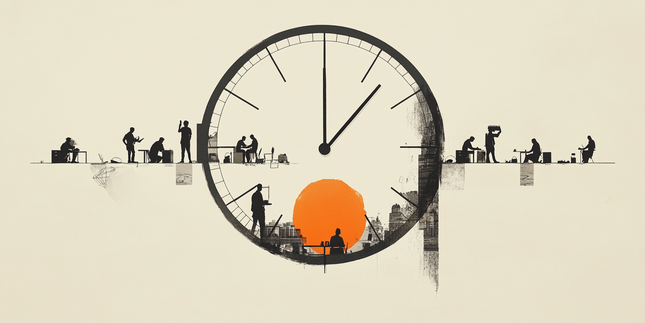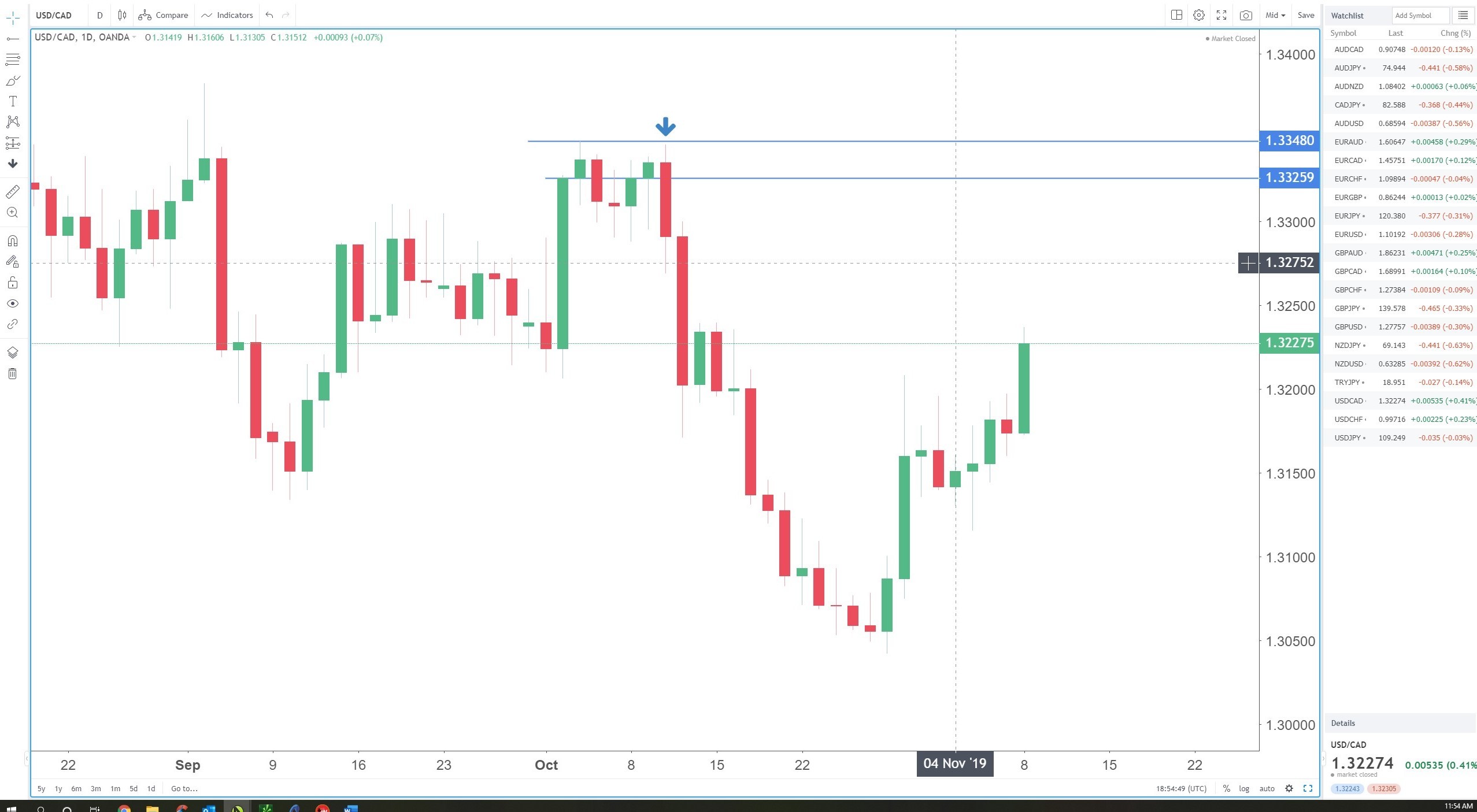Hello traders! This week’s newsletter will explain the power of using higher time frames in your trades.
One of the great things about being an instructor for Online Trading Academy is that I get to meet people from all walks of life and from nearly every industry that exists. I enjoy the diversity of people! However, one thing that seems to be somewhat common is the perception that traders/investors NEED to spend a lot of their time staring at their computer screens to be successful in trading. I strongly disagree with this!
Several famous traders made comments pointing out that, the money is made in the waiting. In fact, some of the most successful traders lie in wait for the chosen trading instrument to get to a favorable price level on the chart, and then pounce. Then they lie in wait for days or weeks or even months as the price goes in their chosen direction. Once in a position, their only action is to manage a stop loss to lock in profits over this trade.
The Problem with Small Time Frame Charts
One thing that has become apparent to me and many other experienced traders is that charts are fractal, meaning that a 1-minute chart will behave in nearly the same way as a daily chart. One of the problems with using a small-time frame chart is the fact that the smaller the time frame, the more computers/bots/algorithms you are trading against! When you understand that these computer bots might be in a trade for only a few seconds or minutes and their position sizes can be huge, most retail traders can’t compete with those machines. The way I describe it is that these computer bot companies have more money than us, faster computers than us and faster internet connections than us. It would be like me (5’ 10”, 175 pounds, 50 + years old) trying to compete in the NBA against someone like LeBron James…doubtful I would score even one point, let alone win!
So, let’s look at a couple of examples of fractals in the market, and the corresponding amount of effort involved in trading them.
In the following 15 minute time frame on the EUR/USD pair, a very short term double top formation can be seen. The short-term trader would look to go short at the blue arrow. With an entry at approximately 1.090, their profit target would normally be about 1.065. An amazing 15 pips! They would also be at or near their computer for the few hours they were in the trade…lots of attention required for 15 pips!
The Benefit of Larger Time Frame Charts
Now, when we look at larger time frames, we are trading with institutions that plan on being in their trades for weeks, months, even quarters at a time. As these huge multinational corporations are hedging their currency risk, I believe they are trying to make sure that they are meeting or exceeding their quarterly earnings estimates to drive their share prices higher and achieve their quarterly/yearly bonuses. If a massive, multinational corporation doesn’t care about making 8 pips on a 1-minute chart, why should we? If they are planning on being in a trade for hundreds or thousands of pips for weeks at a time, I think we should consider following their lead!
In this next chart, a Daily time frame on the USD/CAD pair, a similar (fractal!) double top has formed. The longer-term trader would enter their short at the blue arrow, around the 1.3326 mark. As you can see, this trade would have produced many more pips! Using any number of trade management techniques, they could have stayed with this trade down to nearly the 1.3100 level. This should have given them over two hundred pips over about two week’s worth of time…
One of the great things about being in a trade that is going your direction is the lack of trader involvement or attention needed to manage this trade! Every day or two we would expect you to move your stop loss on down, first to break even, then to lock in profits as the trade progressed. How much time does it take to adjust your stop loss? Merely seconds. A few seconds to see if you SHOULD move your stop, a few seconds to see WHERE you should move your stop, and then a couple seconds to actually MOVE the stop. Again, the big pips are made in the waiting, and letting the institutions do their work.
One last thing. When in a trade for days or weeks at a time, one of the worst things you can do is check it every few minutes! This opens up the difficult side of trading: the emotional attachment to the pips on the screen! Imagine you were up 100 pips, then only up 75 pips, then only 20 pips and the emotions you would be feeling. What does the normal retail trader do in that situation? They take themselves out of the trade just to capture that small profit. Invariably, the chart then goes back in their direction, causing them to kick themselves, or even worse, jump back in the trade! We call this chasing the trade. Please don’t do that! If you don’t watch your trade too closely, those small time-frame emotions won’t interfere with your judgement process. Again, often the money is made in the waiting, not the watching!
This content is intended to provide educational information only. This information should not be construed as individual or customized legal, tax, financial or investment services. As each individual's situation is unique, a qualified professional should be consulted before making legal, tax, financial and investment decisions. The educational information provided in this article does not comprise any course or a part of any course that may be used as an educational credit for any certification purpose and will not prepare any User to be accredited for any licenses in any industry and will not prepare any User to get a job. Reproduced by permission from OTAcademy.com click here for Terms of Use: https://www.otacademy.com/about/terms
Editors’ Picks

When are the China Retail Sales, Industrial Production and how could they affect AUD/USD?
The National Bureau of Statistics of China will publish its data for November at 02.00 GMT. AUD/USD trades on a positive note on the day in the lead up to the China Retail Sales, Industrial Production data. The pair gains ground as US Dollar softens amid the prospect of interest rate cuts by the US Federal Reserve next year.

USD/JPY weakens below 156.00 amid Fed rate cut outlook, BoJ rate hike anticipation
The USD/JPY pair trades on a negative note near 155.75 during the early Asian session on Monday. The US Dollar softens against the Japanese Yen amid the prospect of interest rate cuts by the US Federal Reserve next year.

Gold edges higher above $4,300 on Fed rate cut bets
Gold price attracts some buyers to around $4,315 during the early Asian trading hours on Monday. The precious metal extends its upside to the highest since October 21 amid the prospect of interest rate cuts by the US Federal Reserve next year. The delayed US Nonfarm Payrolls report for October will be in the spotlight later on Tuesday.

Week ahead: US NFP and CPI, BoE, ECB and BoJ mark a busy week
After Fed decision, dollar traders lock gaze on NFP and CPI data. Will the BoE deliver a dovish interest rate cut? ECB expected to reiterate “good place” mantra. Will a BoJ rate hike help the yen recover some of its massive losses?

Big week ends with big doubts
The S&P 500 continued to push higher yesterday as the US 2-year yield wavered around the 3.50% mark following a Federal Reserve (Fed) rate cut earlier this week that was ultimately perceived as not that hawkish after all. The cut is especially boosting the non-tech pockets of the market.
RECOMMENDED LESSONS
Making money in forex is easy if you know how the bankers trade!
I’m often mystified in my educational forex articles why so many traders struggle to make consistent money out of forex trading. The answer has more to do with what they don’t know than what they do know. After working in investment banks for 20 years many of which were as a Chief trader its second knowledge how to extract cash out of the market.
5 Forex News Events You Need To Know
In the fast moving world of currency markets where huge moves can seemingly come from nowhere, it is extremely important for new traders to learn about the various economic indicators and forex news events and releases that shape the markets. Indeed, quickly getting a handle on which data to look out for, what it means, and how to trade it can see new traders quickly become far more profitable and sets up the road to long term success.
Top 10 Chart Patterns Every Trader Should Know
Chart patterns are one of the most effective trading tools for a trader. They are pure price-action, and form on the basis of underlying buying and selling pressure. Chart patterns have a proven track-record, and traders use them to identify continuation or reversal signals, to open positions and identify price targets.
7 Ways to Avoid Forex Scams
The forex industry is recently seeing more and more scams. Here are 7 ways to avoid losing your money in such scams: Forex scams are becoming frequent. Michael Greenberg reports on luxurious expenses, including a submarine bought from the money taken from forex traders. Here’s another report of a forex fraud. So, how can we avoid falling in such forex scams?
What Are the 10 Fatal Mistakes Traders Make
Trading is exciting. Trading is hard. Trading is extremely hard. Some say that it takes more than 10,000 hours to master. Others believe that trading is the way to quick riches. They might be both wrong. What is important to know that no matter how experienced you are, mistakes will be part of the trading process.
The challenge: Timing the market and trader psychology
Successful trading often comes down to timing – entering and exiting trades at the right moments. Yet timing the market is notoriously difficult, largely because human psychology can derail even the best plans. Two powerful emotions in particular – fear and greed – tend to drive trading decisions off course.



